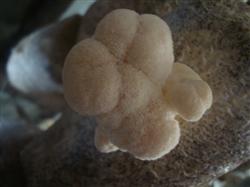How to cultivate Coprinus comatus in summer?

How to cultivate coprinus mushrooms in summer? Coprinus comatus is a medium temperature variety, suitable for temperature of 12 25℃ under the conditions of fruiting. Cultivated under natural conditions, it can only produce two seasons in spring and autumn. However, as long as the biological characteristics of it are mastered and the conditions required for its growth are met, fresh mushrooms can still be produced in summer. Summer cultivation of coprinus can be carried out by referring to the following methods: Fungus bed construction: this technology is suitable for large-scale production, cultivation field area of 300 1000 square meters. Dig 0.2 m deep, 1.4 m wide and 20 m long bacterial beds, with spacing of more than 0.8 m, and reserve a 46 m wide operation channel every 6 beds to facilitate vehicle access. Set up sunshades: 2.53 meters above the cultivation field, set up sunshades, airtight and opaque. The shed was covered with plastic film to keep rain out. Cover a layer of sunshade net above, the edge of the sunshade should be 3 meters above the periphery of the cultivation field, so that the sunlight at 9:16 can not direct the fungus bed. In spring, long vine plants are planted around the shed, especially long gourd melon, chayote, loofah and pumpkin. Humidifying device: water spraying pipe and one-way spray head are set up around the upper part of the sunshade, and a row of double-nozzle pipes are set up every 45 meters in the sunshade. The function of the spray head is to spray water and keep moisture to the space in the sunshade. Installation should be field tested to ensure that spray does not leave dead ends. All around the pipeline should be equipped with a valve on each side to close the downwind nozzle in case of wind. Insect control measures: the sun shade is enclosed with insect net to prevent insects from entering. Cover material: Fertile vegetable garden soil or vegetable greenhouse tillage layer of manure. 200 kg fermented cow dung, 200 kg chicken manure and 10 kg urea are added to every 1000 kg soil. After fully mixing, 600 times phoxim solution is sprayed, and then film is covered. After about 57 days, the mound is opened, 30 kg lime powder is added, mixed well and piled. Film is covered. After 7 days, it can be used. The covering material can be used according to the amount of 2 cubic meters of covering soil per 100 square meters of bed. Cultivation management: The treatment of base material shall be carried out according to the conventional method, and it is required to bag and grow bacteria. Conditions should be created to extend the time of bacteria, generally extended for more than 30 days, and then by conventional methods to remove bags into the bed, soil. Under natural humidity conditions, the average relative humidity of the air under the awning can be maintained at 80%. Note: The relative humidity of the air under the sunshade should not be too high, the highest in the middle part is 95%, and the peripheral relative humidity is maintained at about 75%. Water spray moisturizing should be repeated, a small amount, try not to make the accumulation of water droplets on the fruit body. The soil thickness is 2 cm, but if you want to produce large mushrooms, you can cover the soil to 4 5 cm. When the natural wind is large, you can set up a windshield or plastic film on one side of the sunshade to the wind. When the wind is 3 or 4, you can not take measures. Click for more Coprinus cultivation technology Click for more edible mushroom cultivation technology
- Prev

How to grow hericium Erinaceus indoors?
How to grow hericium Erinaceus indoors? Please introduce the planting methods for indoor cultivation of hericium Erinaceus can refer to the following methods: 1. The cultivation of hericium Erinaceus should be carried out first. There are two methods of strain isolation: spore isolation and tissue isolation. Spore isolation is collected under aseptic conditions and released when hericium Erinaceus matures.
- Next

What should we pay attention to when planting Coprinus comatus in bed?
What should we pay attention to when planting Coprinus comatus in bed? Please introduce in detail the cultivation technology of Coprinus comatus, also known as Coprinus comatus, also known as Coprinus comatus, which is a new variety of edible mushroom. It is suitable for cultivation in March and Autumn from March to September in Shandong Province, with a variety of cultivation methods. Bed cultivation techniques are introduced. First, Coprinus comatus planted.
Related
- Fuxing push coffee new agricultural production and marketing class: lack of small-scale processing plants
- Jujube rice field leisure farm deep ploughing Yilan for five years to create a space for organic food and play
- Nongyu Farm-A trial of organic papaya for brave women with advanced technology
- Four points for attention in the prevention and control of diseases and insect pests of edible fungi
- How to add nutrient solution to Edible Fungi
- Is there any good way to control edible fungus mites?
- Open Inoculation Technology of Edible Fungi
- Is there any clever way to use fertilizer for edible fungus in winter?
- What agents are used to kill the pathogens of edible fungi in the mushroom shed?
- Rapid drying of Edible Fungi

